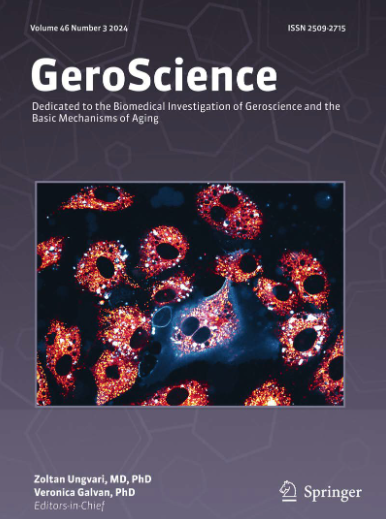Association between weight-adjusted waist index and cardiometabolic multimorbidity in older adults: Findings from the English Longitudinal Study of Ageing.
IF 5.4
2区 医学
Q1 GERIATRICS & GERONTOLOGY
引用次数: 0
Abstract
The weight-adjusted waist index (WWI) is a novel anthropometric measure designed to better reflect central obesity than traditional indices such as body mass index and waist circumference (WC). This study examined the prospective association between WWI and cardiometabolic multimorbidity (CMM) and evaluated its predictive utility. We included 3,348 participants (mean age 63 years; 45.1% male) from the English Longitudinal Study of Ageing who were free from hypertension, coronary heart disease, diabetes, and stroke at baseline (wave 4: 2008-2009). WWI was calculated as WC (cm) divided by the square root of body weight (kg). CMM was defined as the presence of ≥ 2 of the following conditions at wave 10 (2021-2023): hypertension, cardiovascular disease, diabetes, or stroke. Multivariable logistic regression and measures of discrimination were used to assess associations and predictive value. Over 15 years, 197 participants developed CMM. Restricted cubic spline analysis indicated a linear dose-response relationship between WWI and CMM risk (p for nonlinearity = .44). Each 1 SD increase in WWI was associated with higher odds of CMM (odds ratio, OR = 1.30; 95% CI: 1.12-1.51), persisting after adjustment for physical activity (OR = 1.28; 95% CI: 1.10-1.49). Similar associations were observed across WWI tertiles. Adding WWI to conventional risk models slightly improved discrimination (ΔC-index = 0.0065; p = .29), with a significant improvement in model fit (-2 log likelihood, p = .001). Higher WWI levels were independently and linearly associated with increased CMM risk in older adults. WWI also improved CMM risk prediction beyond conventional risk factors.体重调整后的腰围指数与老年人心脏代谢多病之间的关系:来自英国老龄化纵向研究的发现
体重调整腰围指数(WWI)是一种新的人体测量指标,旨在比传统的体重指数(bmi)和腰围(WC)等指标更好地反映中心性肥胖。本研究探讨了第一次世界大战与心脏代谢多病(CMM)之间的前瞻性关联,并评估了其预测效用。我们纳入了3348名参与者(平均年龄63岁;45.1%男性),他们在基线时没有高血压、冠心病、糖尿病和中风(第四波:2008-2009)。WWI的计算方法为体重(cm)除以体重(kg)的平方根。CMM被定义为在第10波(2021-2023)存在以下≥2种情况:高血压、心血管疾病、糖尿病或中风。使用多变量逻辑回归和判别措施来评估相关性和预测价值。15年来,197名参与者开发了CMM。限制三次样条分析表明一战与CMM风险之间存在线性剂量-反应关系(非线性p = 0.44)。WWI每增加1 SD, CMM的几率就会增加(比值比,OR = 1.30;95% CI: 1.12-1.51),在调整体力活动后持续存在(OR = 1.28;95% ci: 1.10-1.49)。类似的关联在一战时期的瓷砖上也观察到了。将第一次世界大战加入传统风险模型略微改善了歧视(ΔC-index = 0.0065;P = .29),模型拟合显著改善(-2对数似然,P = .001)。较高的WWI水平与老年人CMM风险增加独立且线性相关。第一次世界大战还改进了CMM风险预测,超越了传统的风险因素。
本文章由计算机程序翻译,如有差异,请以英文原文为准。
求助全文
约1分钟内获得全文
求助全文
来源期刊

GeroScience
Medicine-Complementary and Alternative Medicine
CiteScore
10.50
自引率
5.40%
发文量
182
期刊介绍:
GeroScience is a bi-monthly, international, peer-reviewed journal that publishes articles related to research in the biology of aging and research on biomedical applications that impact aging. The scope of articles to be considered include evolutionary biology, biophysics, genetics, genomics, proteomics, molecular biology, cell biology, biochemistry, endocrinology, immunology, physiology, pharmacology, neuroscience, and psychology.
 求助内容:
求助内容: 应助结果提醒方式:
应助结果提醒方式:


